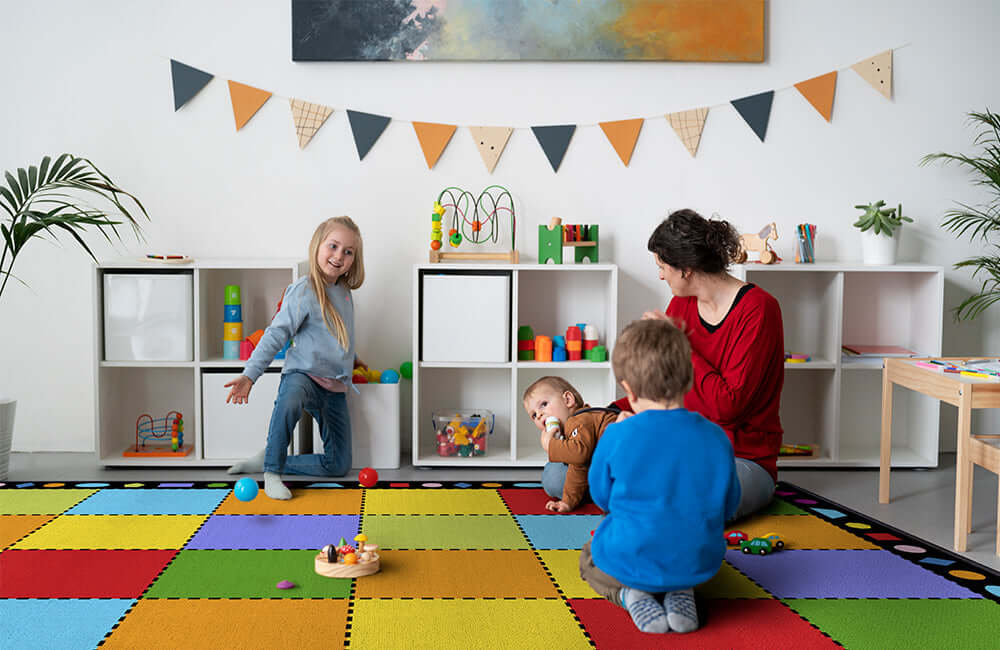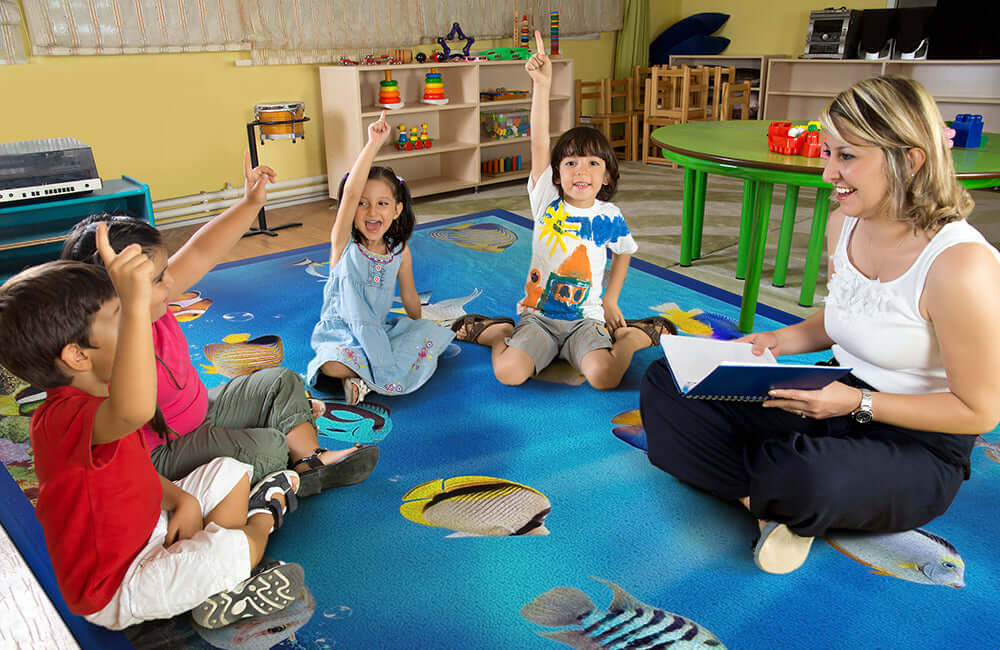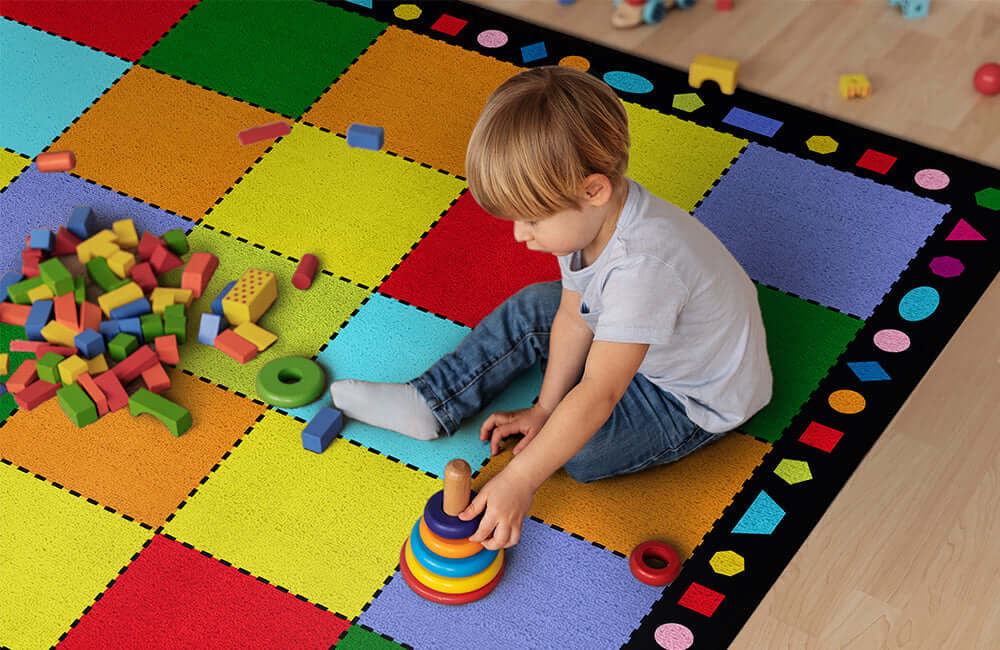The humble classroom carpet is far more than a decorative afterthought—it's a foundational element that influences everything from classroom acoustics and comfort to learning opportunities and student engagement. In educational settings where young learners spend over 1,000 hours annually, the right carpet creates defined spaces for gathering, provides comfort during floor-based activities, and can even serve as an instructional tool.
However, selecting the perfect classroom carpet requires navigating numerous considerations, from durability requirements to educational features, safety standards to budget constraints. This comprehensive guide walks you through every aspect of making this important investment for your learning environment, helping you create a space where both students and teachers can thrive.
Understanding Classroom Carpet Requirements
Classroom carpets face unique demands that distinguish them from residential or even standard commercial options. According to Education Week's report on classroom environments, the physical elements of learning spaces significantly impact educational outcomes, with floor coverings playing a substantial role in creating effective environments.
Daily Usage Patterns
Unlike home carpets, classroom carpets routinely endure:
- 20-30 students sitting, standing, and moving throughout the day
- Frequent transitions between activities
- Regular exposure to art materials, classroom supplies, and occasional spills
- Daily cleaning requirements
- Furniture rearrangement
Educational Environment Needs
Beyond durability, classroom carpets must support:
- Sound absorption in acoustically challenging spaces
- Comfortable seating for circle time and reading activities
- Clear visual boundaries for classroom management
- Potential curriculum connections through designs
- Safe surfaces for varied learning activities
Key Factors to Consider
Durability Rating
Commercial-grade carpets with high durability ratings are essential for classroom use. Look for:
- Face weight of at least 26 ounces per square yard
- Density rating of 5,000 or higher
- Fiber systems designed for heavy traffic areas
- Commercial warranty of 10+ years
Installation Method
Consider how the carpet will be installed and potentially replaced:
- Carpet tiles allow for selective replacement of damaged sections
- Wall-to-wall installation provides seamless coverage but may be harder to repair
- Area rugs offer flexibility but may require non-slip backing for safety
Maintenance Requirements
Classroom carpets should balance cleanliness with practical maintenance needs:
- Stain-resistant fibers and treatments
- Low pile height for easier vacuuming
- Moisture-resistant backing
- Compatibility with school cleaning protocols
As noted by classroom design expert Emily Henderson on her education blog, "The ideal classroom carpet strikes the right balance between durability and comfort, meeting rigorous performance standards while still creating an inviting space where children want to gather."
Educational Features and Designs
Literacy Support
Alphabet carpets remain among the most popular options, offering:
- Constant visual exposure to letter forms
- Specific seating spots for organization ("Please sit on letter P")
- Interactive reference points for literacy activities
- Reinforcement of letter recognition skills
Numeracy Elements
Mathematical carpet designs support early number concepts through:
- Number lines and hundred charts
- Geometric shapes and patterns
- Measurement references
- Counting games built into the design
Map and Geography Carpets
According to Wikipedia's article on kinesthetic learning, physical interaction with geographical representations enhances spatial understanding. Map carpets provide:
- Physical reference points for location concepts
- Interactive surfaces for geography lessons
- Visual reinforcement of spatial relationships
- Opportunities for movement-based geography activities
Color and Pattern Considerations
Beyond specific educational elements, consider how design affects learning:
- Borders define clear boundaries for group activities
- Alternating color patterns create individual seating spaces
- Calming colors (blues, greens) may support focus
- Vibrant designs inspire engagement but may increase stimulation
Material Options and Durability
Nylon Fiber
The gold standard for classroom carpets, nylon offers:
- Superior durability and resilience
- Excellent stain resistance when properly treated
- Good appearance retention after heavy use
- Higher initial cost but better long-term value
Olefin/Polypropylene
A budget-friendly alternative with:
- Natural stain and moisture resistance
- Good colorfastness
- Lower durability than nylon
- Potential for crushing under heavy furniture
Wool Blends
For schools prioritizing natural materials:
- Exceptional durability and appearance retention
- Natural soil resistance and temperature regulation
- Higher cost but potentially longer lifespan
- Special cleaning considerations
Recycled and Eco-Friendly Options
The Green Schools Alliance recommends considering sustainability factors:
- Carpets made from recycled PET bottles
- Low VOC emissions certification
- Recyclable materials with end-of-life programs
- Responsible manufacturing processes
Health and Safety Considerations
Fire Safety Standards
All classroom carpets must meet strict fire safety requirements:
- Class I fire rating essential for educational settings
- Flame spread and smoke development ratings
- Compliance with local school district requirements
- Documentation of testing and certification
Indoor Air Quality
Given children's sensitivity to indoor air pollutants, prioritize:
- CRI Green Label Plus certification
- Low or no VOC emissions
- Regular professional cleaning to remove allergens
- Materials resistant to mold and mildew
Slip Resistance and Edges
Prevent tripping hazards through:
- Secure carpet anchoring systems
- Beveled edges on area rugs
- Non-slip backing or appropriate tape systems
- Regular inspection for curling or damage
Allergen Considerations
For students with sensitivities:
- Antimicrobial treatments that inhibit bacteria growth
- Short, tight pile that traps fewer allergens
- Regular deep cleaning schedule
- HEPA-filtered vacuum maintenance
<a id="sizing"></a>
Sizing and Placement Guidelines
Group Gathering Areas
For main instructional rugs:
- Allow 18-24 inches of space per seated student
- Consider age group when calculating (older students need more space)
- Account for teacher space and any display easels
- Leave margin for accessibility and movement
Learning Centers
For smaller activity-specific carpets:
- Minimum 6'x9' for small group activities
- Clear visual distinction from main gathering rug
- Positioned to minimize traffic across main teaching areas
- Sized to accommodate relevant furniture and materials
Room Proportion Considerations
Adapt to your specific classroom:
- In smaller rooms, use carpet to define essential gathering space only
- For larger classrooms, consider multiple carpet zones for different functions
- Account for door swings and emergency egress paths
- Consider sightlines to instructional areas
<a id="budget"></a>
Budgeting and Value Assessment
Price Range Expectations
Classroom carpets vary widely in price:
- Basic classroom area rugs: $200-500
- Educational feature rugs (alphabet, numbers): $300-700
- Custom-sized commercial options: $5-15 per square foot
- Premium designs and materials: $700-1,500+
Long-Term Value Calculations
Consider the complete financial picture:
- Anticipated lifespan (higher quality typically means fewer replacements)
- Warranty coverage and terms
- Maintenance costs over expected use period
- Potential for section replacement vs. whole carpet replacement
Funding Sources and Strategies
Explore options beyond standard budget allocations:
- Parent-teacher organization funding
- Education foundation grants
- DonorsChoose and similar crowdfunding platforms
- Partnerships with local businesses
- district-wide purchasing for volume discounts
As education finance blogger Kate Williams notes on EdFinance Today, "When evaluating classroom carpet investments, administrators should consider not just initial cost but total cost of ownership, including replacement frequency and maintenance requirements."
Maintenance Best Practices
Daily Care
Establish regular maintenance routines:
- Daily vacuuming with commercial-grade equipment
- Immediate spot treatment for spills
- Student responsibilities for basic care
- Traffic pattern management to distribute wear
Deep Cleaning Schedule
Plan for more intensive maintenance:
- Professional hot water extraction 2-3 times yearly
- Schedule during major breaks to allow proper drying
- Spot treatment between deep cleanings
- Rotation of furniture to prevent permanent crushing
Spill Response Protocol
Prepare for inevitable accidents:
- Documented cleaning procedure for common substances
- Appropriate cleaning supplies readily available
- Staff training on proper techniques
- Professional intervention for serious stains
Preventative Measures
Extend carpet life through:
- Entrance matting to capture outdoor debris
- No-shoe zones or indoor shoe policies
- Clear expectations for student carpet behavior
- Protection during messy classroom activities
Top Brands and Resources
Reliable Educational Carpet Manufacturers
Several companies specialize in classroom-specific carpets:
- Carpets for Kids (educational designs with commercial durability)
- Joy Carpets (extensive themed options with educational features)
- Lakeshore Learning (teacher-focused designs with classroom functionality)
- Kaplan Early Learning Company (early childhood focus with developmental features)
Procurement Resources
For purchasing assistance:
- School specialty supply catalogs and representatives
- Educational environment consultants
- State contract pricing for larger purchases
- Commercial flooring specialists with education experience
Design Consultation
For complex classroom planning:
- School district facilities departments
- Educational interior designers
- Commercial carpet retailers with classroom experience
- Teacher collaboration groups for peer recommendations
Conclusion
The perfect classroom carpet represents a critical investment in both the physical environment and educational potential of your learning space. By carefully evaluating durability requirements, educational features, material options, safety considerations, and budget constraints, you can select a carpet that will serve your students and teaching goals effectively for years to come.
Remember that the ideal carpet balances practical considerations with pedagogical potential, creating a comfortable, safe gathering space while offering opportunities to extend and enhance learning. Whether you're replacing an existing classroom carpet or outfitting a new learning environment, the time invested in making a thoughtful selection will pay dividends in classroom management, student engagement, and instructional opportunities.




Leave a comment
This site is protected by hCaptcha and the hCaptcha Privacy Policy and Terms of Service apply.